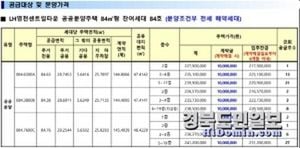As the 2025 legislative session in Montana approaches its conclusion, advocates for early childhood care and education are intently observing a series of policy proposals aimed at addressing the persistent challenges within the child care sector. The discussions have been largely shaped by ongoing workforce shortages, which have become a significant concern for child care providers across the state.
According to a 2023 report from the Montana Department of Public Health and Human Services, employee turnover was identified as the leading cause of open positions in the child care industry. Grace Decker, coordinator for Montana Advocates for Children, estimates that approximately one in three child care workers leaves the profession each year. The low wages in the sector are cited as the primary reason for these departures, with the average hourly wage for child care workers in Montana reported at just $12.73 in 2022.
In response to these challenges, House Bill 456 has emerged as a key proposal aimed at alleviating some of the financial burdens faced by child care workers. Sponsored by Representative Jonathan Karlen, D-Missoula, this bill seeks to automatically qualify child care workers with children for state child care assistance. It is estimated that this initiative could help cover tuition costs for up to 400 children of child care workers who currently do not qualify for Montana’s Best Beginnings scholarship, at a projected cost of $5.4 million. The bill received strong bipartisan support and successfully cleared the House in early April, with its first Senate committee hearing scheduled soon.
Michelle Parks, executive director of the nonprofit Child Care Resources based in Missoula, expressed optimism about the potential impact of HB 456, stating that it would help stabilize the state’s child care workforce. Her organization has been managing the Best Beginnings program for families in the Missoula area but is currently expanding its coverage to include 26 counties in Montana following adjustments to the state’s contracted child care support services last year.
Parks noted that while the implementation of HB 456 would increase her organization’s workload, it would ultimately benefit many, particularly dual-income households where parents earn just enough to fall above the eligibility threshold for assistance. "We’re hoping that a lot of providers that are comping their workforce right now will be able to fill those slots with scholarships and keep those workers," she said.
In addition to HB 456, another proposal spearheaded by Karlen aimed to raise the income eligibility threshold for Best Beginnings scholarships for all families in the state. However, this proposal was voted down in the House in late March.
Meanwhile, Senate Bill 321, sponsored by Senator Josh Kassmier, R-Fort Benton, is gaining traction. This bill proposes a three-pronged income tax credit for families, child care workers, and businesses that provide direct child care assistance to their employees. While the initial proposed per-child credit of $1,200 was reduced to $600, lawmakers preserved credit totals of $1,600 for eligible child care workers and $5,000 for qualifying businesses. The total cost of these credits is projected to be around $44 million. SB 321 has already passed the Senate and is set for a House committee hearing.
Another significant piece of legislation, House Bill 220, introduced by Representative Mary Caferro, D-Helena, aims to create a $1,200 tax credit for children under the age of five. This bill has also garnered strong bipartisan support and cleared the House this month.
On April 14, 2025, Senator Laura Smith, D-Helena, presented one of the most ambitious child care proposals of the session before the House Human Services Committee. Citing a 2020 state labor report, Smith highlighted that 40% of Montana businesses reported difficulties in hiring and retaining employees due to local child care shortages, with 62% of parents missing work for similar reasons. Smith proposed a substantial one-time appropriation of $150 million to establish an endowment fund intended to provide seed money for grants supporting workforce development, technical assistance, quality initiatives, and emergency assistance for the child care sector. SB 565 passed the Senate on April 5 with a vote of 26-20.
Further complicating the legislative landscape, House Bill 924 aims to create the Montana Growth and Opportunity Trust, which would secure hundreds of millions of dollars and allocate funds in high-revenue years to support child care initiatives. This bill is designed to build an endowment that could potentially direct up to $15 million annually toward child care support, alongside funding for other critical areas such as pensions, affordable housing loans, and property tax assistance.
Despite the apparent momentum behind these child care policies, some Republican lawmakers have raised concerns about the associated costs. During a Senate floor debate on SB 321, Senator Greg Hertz, R-Polson, warned colleagues to be cautious with spending as the session progresses. He expressed concern regarding the fiscal implications of the bill, even after the proposed per-child tax credit was significantly reduced. Senator Daniel Emrich, R-Great Falls, criticized the focus on child care workers, arguing that it overlooked the needs of parents, stating, "We don’t have a huge shortage of child care workers, so this makes no sense."
The Montana Department of Labor and Industry reported last year that licensed child care capacity statewide met less than half of the demand for services, with the median annual wage for child care workers at $26,720. A recent poll conducted by Montana Free Press and Eagleton found that 71% of Montanans are concerned about the cost of child care, while approximately 64% worry about the availability of child care in their communities.
Decker noted that lawmakers are increasingly acknowledging child care as a priority in the 2025 legislative session, which she considers encouraging. She pointed out that legislators have consistently listed child care as a key issue that constituents expect them to address. "That continues to be really encouraging," Decker said, adding that child care remains a central topic as the session nears its end.
As the legislative session progresses, the fate of these proposals remains uncertain, but the ongoing discussions reflect a growing recognition of the critical role that child care plays in supporting Montana’s working families and the state’s economy.





